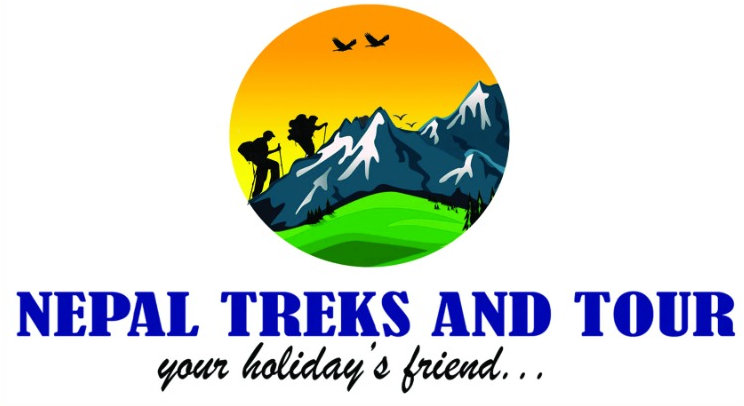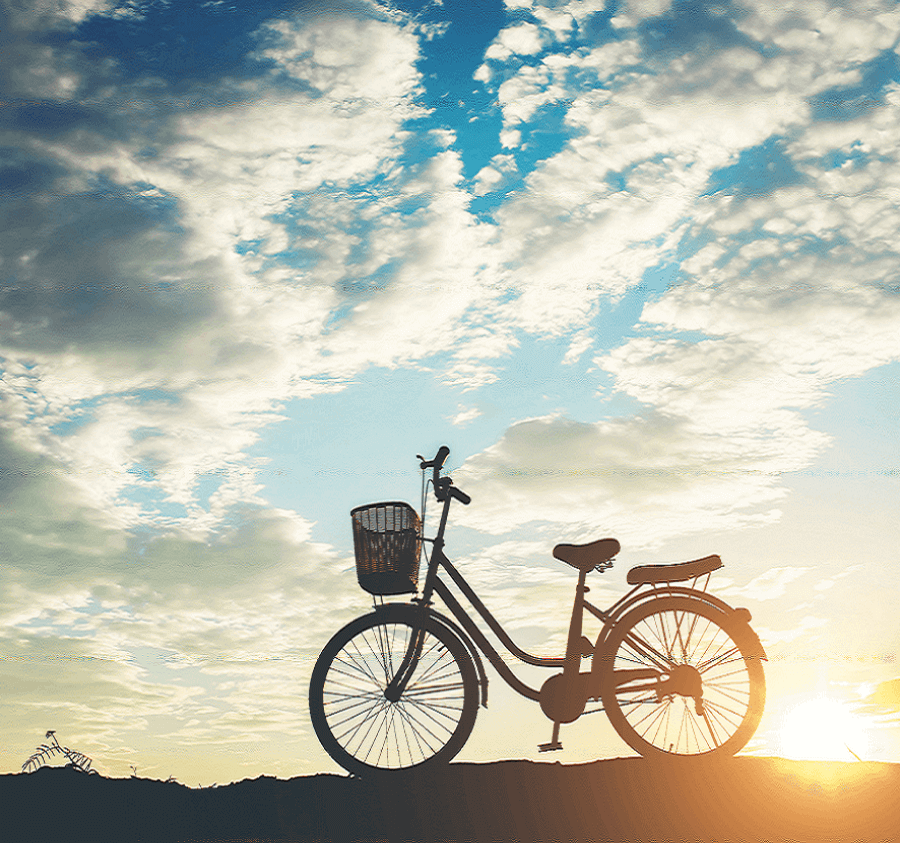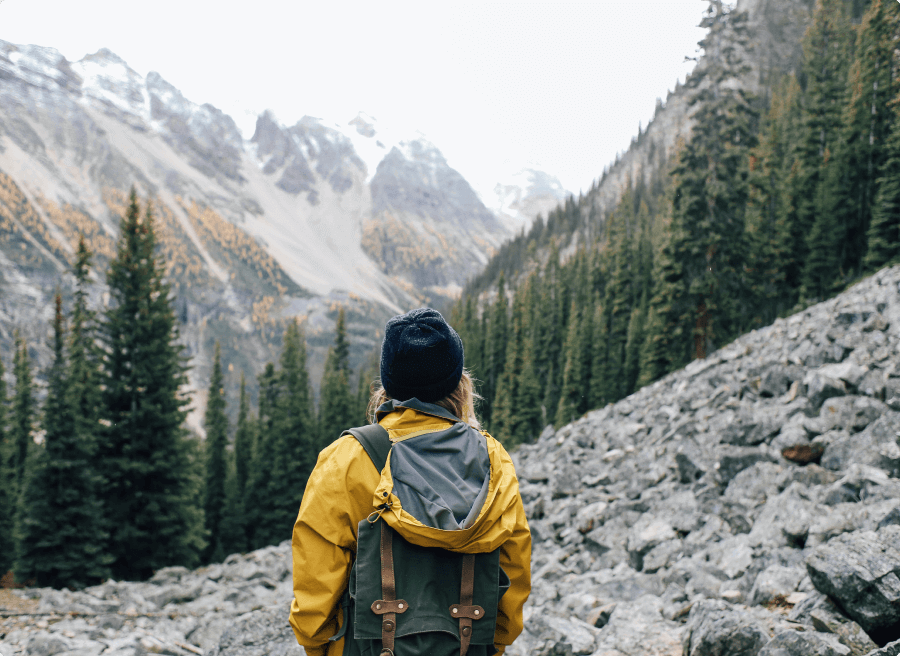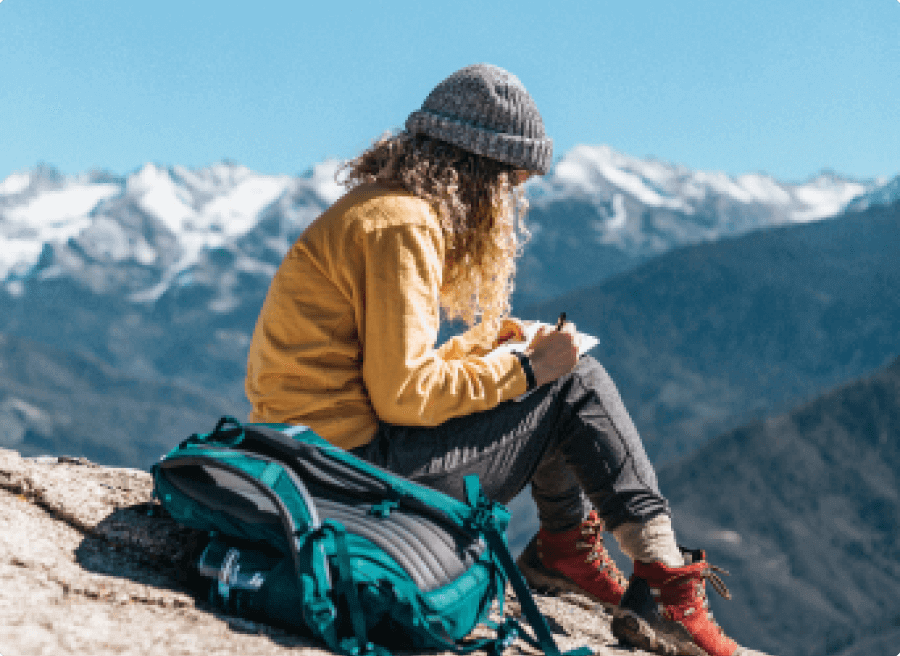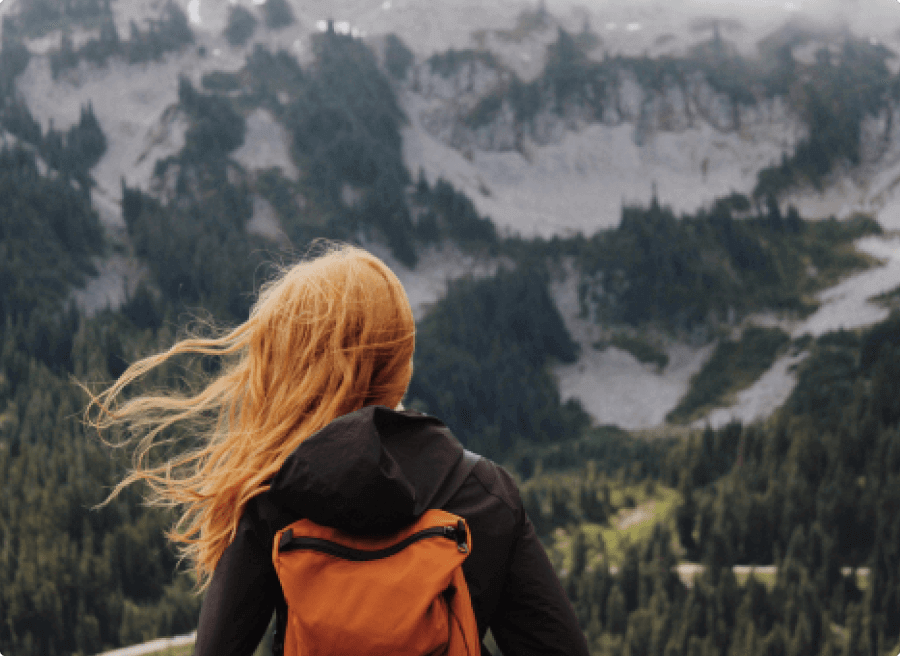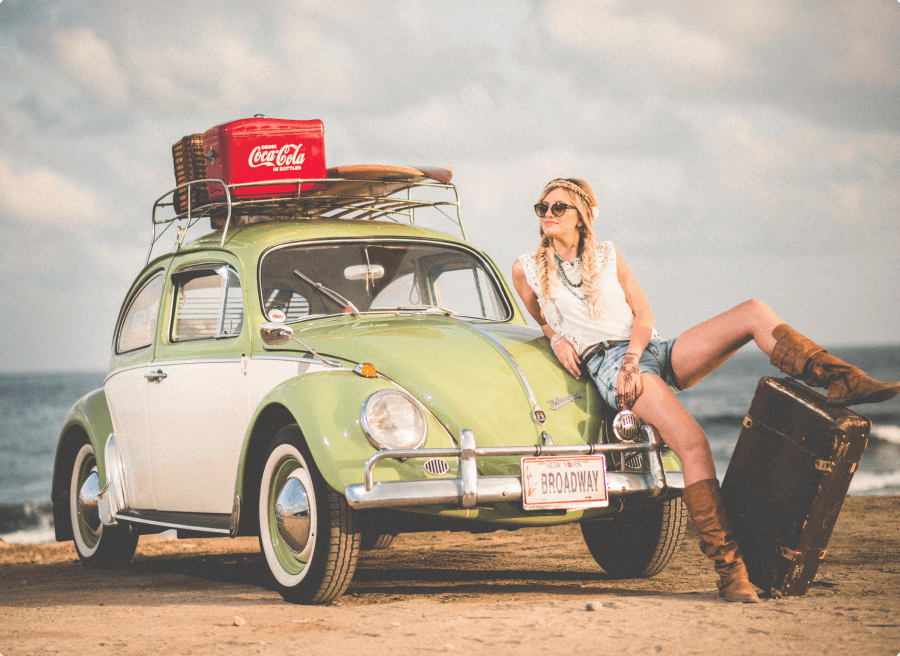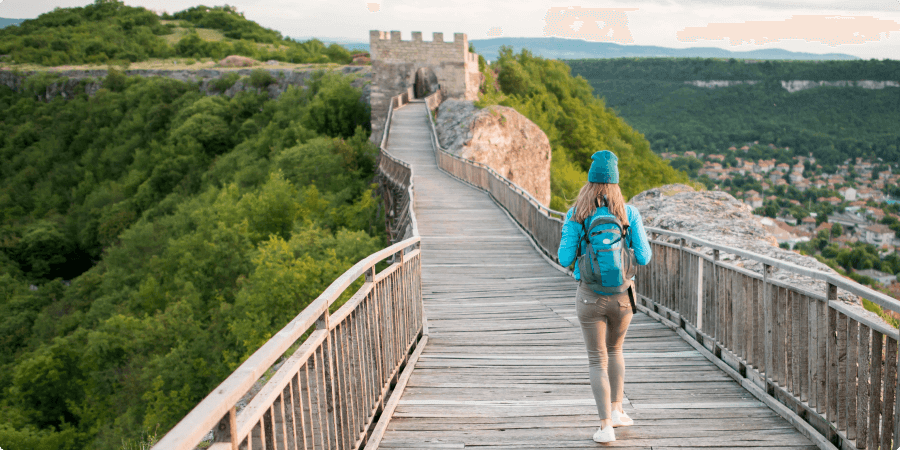The Himalayas are one of the greatest mountain ranges on Earth, and Nepal houses a huge chunk of it. With several 8,000 meters (26,247 ft), 7,000 meters (22,966 ft), and 6,000 meters (19,685 ft) above peaks, this tiny country is also home to eight out of the ten highest mountains on Earth. This includes Mt. Everest, Mt. Kanchenjunga, Mt. Lhotse, Mt. Makalu, Mt. Manaslu, Mt. Dhaulagiri, Mt. Cho Oyu, and Mt. Annapurna.
As all the most prominent mountains are located in Nepal, this country is a playground for mountaineers and adrenaline lovers. Apart from these 8 eight-thousanders, there are also huge selections of 7,000-meter peaks that are equally technically challenging. Then comes the third category of peaks, which are known as trekking peaks in Nepal and are beginner-friendly.
So, the trekking peaks are considered the easiest mountain to climb in Nepal. Easiest in the sense of less to no technical difficulty involved. However, the climbing journey is very physically demanding. Let’s say you have done the Everest Base Camp trek, Annapurna Circuit trek, Three Passes trek, etc, or climbed Kilimanjaro and now looking for the next adventure.
You may think about climbing a trekking peak in the Himalayas. Nepal has the best beginner mountains to climb where you can literally introduce yourself to climbing and gradually hone your skills. These climbing expeditions are guided by Nepali mountaineers who have climbed these peaks several times before and led hundreds of avid climbers.
Not only that, these trekking peaks are also great for acclimatizing before you push toward bigger mountains. Below, we have introduced the top 5 climbing peaks in Nepal that are perfect for new climbers. Likewise, we have also shared a few things that beginner climbers should know before climbing a peak in the Himalayas and some tips.
Hope, this blog will help you make your dream of climbing a Himalayan mountain true!
Top 5 climbing peaks in Nepal- beginner mountains to climb
Mera Peak Climb
Altitude: 6,476 m/21,247 ft
Difficulty: Strenuous (Alpine PD+)
Duration: 17 days
Cost: USD 2,500 per person
Mera Peak is the highest trekking peak in Nepal, located in the Khumbu region. It is one of the best options for someone who is thinking of climbing their first mountain in the Himalayas. Reaching the summit is very physically demanding, but there is no technical climbing involved. The overall journey is unmatched, and the sense of accomplishment is huge.
Mera Peak climbing is a 17-day program. The journey begins with a short flight from Kathmandu to Lukla 2,860 m/9,383 ft). From Lukla, you will follow an offbeat route and trek via the Hinku Valley. It is a rarely visited part of the Khumbu region with wild and pristine nature and not crowded trails. You have to trek for five days to reach Khare (4,950 m/16,240 ft), the base camp of Mera Peak.
The trekking route goes via isolated Kharkas and remote settlements. During your trekking time, you will spend the nights in the tea houses along the way and get to see the unique daily life of the locals, which is a bonus. Likewise, the mountain views are stunning and only get better as you ascend higher. At Khare, you will spend two nights resting and preparing for the climb.
On the way to Mera Peak summit, you will make a high camp at 5,780 meters (18,964 ft). This will provide you a break between base camp and summit and also expose you to the alpine exposure that mountaineers come across while pushing towards bigger mountains. The climbing route is a mix of snow and ice.
There are no technical sections on the way to the summit, but you have to know basic climbing skills. After summiting the Mera Peak, you will follow the same route and descend to Khare. Further, you will retrace the trail back to Lukla and fly to Kathmandu.
Island Peak Climb
Altitude: 6,189 m/20,305 ft
Difficulty: Strenuous (Alpine PD+)
Duration: 16 days
Cost: USD 1,875 per person
Island Peak is another famous beginner-friendly peak to climb in the Himalayas. It is known as Imja Tse in Nepali words. The name Island Peak was given by Tenzing Norgay Sherpa and Edmund Hillary during their 1953 Mt. Everest expedition. The journey starts from Lukla (2,860 m/9,383 ft).
Following the mainstream EBC trail, you will trek up to Dingboche village (4,410 m/14,468 ft), and from here, follow an offbeat route to Chukhung village (4,730 m/15,518 ft). During trekking, you will spend nights in the comfortable lodges and get to see the daily lifestyle of Sherpas.
The trekking route is quite bustling, so you will have lovely interactions with fellow trekkers before you follow a less crowded, more isolated route to Island Peak Base Camp. It is situated at 5,200 meters (17,060 ft). From the base camp, you will directly climb to the summit of Island Peak.
The summit day starts between 2:00 AM – 3:00 AM. Following the footsteps of your guide, you will begin climbing in the pitch dark using headlamps. Follow a rocky ridge to a glacier and gradually cross a snow headwall that leads to the summit. In the final section, you will climb a 60 to 70-degree slope (about 150 meters tall).
The entire route will be secured with the fixed ropes that you will use to climb up and down. After the summit push, return to base camp and trek back to Lukla, following the same route.
EBC with Island Peak Climb
Altitude: 6,189 m/20,305 ft
Difficulty: Strenuous (Alpine PD+)
Duration: 19 days
Cost: USD 2,095 per person
This is our second version of the Island Peak climbing. Following this itinerary, you will also ascend to Everest Base Camp (5,364 m/17,598 ft) and Kala Patthar (5,545 m/18,192 ft). This Island Peak climbing itinerary is perfect for travelers who are not in a rush and can spend a few more days trekking. Moreover, climbing to EBC and Kala Patthar will give you a better chance to acclimatize before climbing the Island Peak.
During Island Peak climbing with Everest Base Camp, you will spend two acclimatization days as well. The trail is almost the same, and so does the climbing route. Our team will be there to support you during the climb and set up all the tents. You will also get pre-climbing training that will help you further boost your confidence before the summit push.
The only difference is you will be trekking to EBC in this package.
Yala Peak Climb
Altitude: 5,520 m/18,110 ft
Difficulty: Strenuous (Alpine PD+)
Duration: 15 days
Cost: USD 935 per person
Yala Peak has a relatively lower altitude than other trekking peaks in Nepal, which makes it an ideal option for individuals who wish to start climbing with short peaks. This adventurous journey takes place in the Langtang region. The Yala Peak is situated close to the Tibetan border, northeast of Kyangin Gompa.
It is also a non-technical peak. From Kyanjin Gompa, you can climb the Yala Peak and return in just three days. The risks are very low, and the success of the summit is quite high. The trail from Kyanjin Gompa (3,860 m/12,664 ft) ascends to Yala Peak Base Camp, located at 4,600 meters (15,092 ft), and involves a direct ascent to the summit from here.
The climbing route is rocky and involves snow-covered sections. Crampons and a walking ax are necessary, along with gear like a harness and sling. Even though the climb is not technically challenging, the high altitude results in lower levels of oxygen. You will not need additional oxygen support during climbing, but our team will be equipped with oxygen cylinders in case.
During the 15 days of Yala Peak climbing, you will also get to witness spectacular mountain panoramas and explore the wilderness of the Langtang National Park. The trekking period will take you close to the Tamang community and allow you to see their culture and traditions. The overall journey is very adventurous and fulfilling.
Chulu West Peak Clim
Altitude: 6,420 m/21,063 ft
Difficulty: Strenuous (Alpine PD+)
Duration: 20 days
Cost: USD 2,955 per person
Chulu West Peak is another great climbing adventure for beginner climbers. This peak is located in the Annapurna region. You will follow a very scenic route via rhododendron forests and traditional Nepali villages to reach the Chulu West Peak Base Camp, situated at 4,900 meters (16,076 ft). Above the base camp, you will also make Chulu West Peak High Camp at 5,100 meters (16,732 ft) and push towards the summit.
The Chulu West Peak summit route is straightforward, with no technical sections as well. However, during Chulu West Peak climbing, you will also trek to Tilicho Lake (4,919 m/16,138 ft) and cross the Thorong La pass (5,416 m/17,769 ft). It makes the overall journey physically very demanding. You will spend 20 days exploring the remote and rugged terrain.
Following our Chulu West Peak climbing itinerary, you will spend a rest day at high camp. Our guide will provide you with pre-climbing training and get you mentally ready for the summit push. Like any other trekking peak, you will learn to use different climbing gear and follow the lead of your team leader to the summit.
Things You Should Know During Peak Climbing Preparation In The Himalayas, Nepal
Best time to climb a peak
The Himalayas have a very unpredictable weather pattern throughout the year. However, spring and autumn make the weather a bit more stable and offer climbing windows. Now, picking the right time to climb a mountain in Nepal is crucial. You should pick your climbing time in a way that aligns with your requirements.
For instance, if you are looking for a more solitary and peaceful journey from the very first day, we recommend shoulder months like December, later February, and late May. Weather, climate, and vegetation there will not be a drastic change, but you may play around with the crowd.
Likewise, if you are fine with sharing the trails with other trekkers, go for March to early May or September to November. The time you choose to climb a peak in Nepal will hugely impact your overall climbing experience, so take your time, do research, and only finalize. If you want any assistance, feel free to reach out to us at [email protected] or +977 9851013072.
March to early May: Warm days with cloudy afternoons. The mountain views are incredible on clear days. Morning and night hours are on the colder side. The lower parts of the trail are bloomed with rhododendrons and much vegetation.
September to November: The festival months in Nepal with moderate climate and stable weather. The air is fresh and crisp. The sky is mostly clear with bright and stunning landscapes. One of the best times to be in the Himalayas and climb mountains.
Shoulder months (December, later February, and late May): Perfect time to avoid crowds. You will be playing with the weather as it is in the transitional period during these months. Be more cautious, but no need to worry, as climbing peaks in these months are manageable.
How will accommodation and meals be during the journey?
During any trekking peak climbing expeditions in Nepal, you will spend 4 to 6 days trekking to reach the base camp of the peak. While trekking, you will spend nights in villages along the way. There will be three main kinds of accommodations- tea house, guest house, and lodge.
Tea houses offer the simplest accommodation service in the Himalayas. Lodges offer a bit more comfortable accommodation with luxury options, as well, along some trekking routes. Similarly, guesthouses are like staying with the local family. It is the most authentic version of accommodation.
The meals are offered by these establishments. Dal bhat, thukpa, and momo are the most common dishes. Apart from these, you will also get rice and curries, fried rice, noodles, porridge, soups, pancakes, pasta, sandwiches, chapati, Tibetan bread, thenduk, etc. As per the region and popularity of the trail, the dishes may vary a bit.
Once you are in the base camp or higher camps, you will spend nights in the alpine tents. We will provide all the tents and meals at the base camp and above it. Our team will take care of setting up the tents and cooking the meals. As per our itinerary and group size, we will be self-sufficient till the summit push.
Documents you need to climb a peak in Nepal
To climb a peak in Nepal, you will need travel insurance that covers emergency evacuation and medical bills. Likewise, you will also need a valid passport (at least six months of validity from the day you enter Nepal) and a Nepali tourist visa to enter the country.
You have to get all these documents on your own. Our team will send you trip confirmation mail that you can use to obtain these documents. Check out the Nepal Immigration site to learn more in detail about how to apply for a Nepali tourist visa.
Altitude sickness & acclimatization
Peak climbing in the Himalayas will take you thousands of feet above sea level. Most humans live close to sea level, so when they trek or climb reaching high altitudes, altitude sickness triggers. It is common during high-altitude ventures, however, if you do not cure it on time, the later results are deadly.
Now, during any peak climbing in Nepal, you will spend acclimatization days. These days are meant to let you adjust to the elevation. You will go hiking early in the morning and return to the same place to spend the night. All of our peak climbing itineraries have required acclimatization days.
Likewise, you will also go on acclimatization rotations while at the base camp. We make sure our climbers are well acclimatized with the elevation and are in good health before the push towards the summit. It not only makes our climbing trip very safe but also allows for a much more enjoyable experience.
You can consult your doctor before leaving your country and get some prescribed medications to help subside altitude sickness. Similarly, we will assign you a team leader who is trained and certified to provide first-aid during altitude sickness or any common sickness or injury during the journey.
How to prepare yourself physically and mentally before climbing a peak in the Himalayas?
To prepare for peak climbing in Nepal, you have to train your body and mind. Climbing a peak in the Himalayas is not an easy endeavor. It not only requires your maximum strength but also demands you to push beyond it. So, you have to be physically strong, and it is non-negotiable. Now, to prepare yourself for climbing a peak, do the following things:
- Join a gym and follow a strength training program that focuses on straightening your core and leg muscles. Combine cardio to increase your stamina and endurance. If you are not that physically active individual, we recommend at least training 4 to 5 times a week.
- Additionally, you can swim, cycle, run, and hike to improve stamina.
- If possible, go on a few high-altitude treks to mimic the altitude change.
- Research the region you will be climbing. See how life is there, facilities, internet, food, etc. Having the right expectations will make the journey smooth for you. You will not get annoyed if things are not as per your wish.
- Practice meditation and mindfulness. Climbing a peak in the Himalayas not only challenges the individuals physically but also mentally.
- You have to maintain your composure and be okay with all the limitations and challenges. And this requires a calm mind.
Climbing skills and experience
All the five peaks we mentioned in this blog are meant for beginner climbers, so you do not need any climbing skills. But if you wish, you can join a climbing training program around you before the journey starts. It is up to you. However, one thing that is a must is a trekking experience.
During acclimatization time at the base camp or high camp, our team leader will provide you with pre-climbing training. This is designed to familiarize you with the climbing gear and some basic climbing skills to help boost your confidence.
Packing
We have made the packing list specifically for climbing 6,000 meters above mountains for your general idea. If you are not planning to actively climb mountains, we recommend keeping a balance between buying and renting the gear. Rent the expensive climbing gear in Thamel, Kathmandu. Moreover, you can buy everything related to peak climbing in Kathmandu.
Head & Hand: Sun Cap, Wool/Fleece Hat, Balaclava, Neck Gaiter/High Nec, Lightweight Synthetic Liner Glove, Wind Stopper Fleece Gloves, Heavy Gloves (Mitten)
Upper Body: Short-Sleeved Shirts/T-shirts, Lightweight Top/Thermo Coat, Midweight Top, Synthetic or Fleece Jacket, Down Insulated Jacket, Gore-Tex Jacket
Lower Body: Underwear, Lightweight Long Underpants, Midweight Long Underpants, Trekking Pants, Synthetic Insulated Pants, Gore-Tex Pants, Trekking & Climbing Socks, Summit Socks
Technical Devices/Climbing Gears: Climbing Helmet, Headlamp with Spare Batteries (Petzl/BD), Ice Axe Semi-technical, Harness, Carabiners (Both Lock & Unlock), Ascenders/Jumar, Belay Device (ATC Guide/Figure of 8), Assistant Rope, Tape Sling, Ice Screw, Summit Boot/G2SM, Crampons, 1 Sleeping Bag: -30 +C to -40 +C, Thermarest Cell Foam Mattress, Sun/Glacier Glasses UV Protection, Snow Goggle UV Protection, Extendable Trekking Poles (BD Alpine Flz)
First Aid Kit: Sunscreen (-50 Spf), Lips Guard (-20/-50 Spf), Water Purification Tablets, Baby Wipes or Wet Towels, Handy Plaster, Crack Bandage, Tincture, Lodine, Strepsils, Antibiotic, Paracetamol, Aspirin, Sinex, Anti-Diarrhea Capsule/Eldoper, Brufen/Ibuprofens, Diamox, Eye Drops, Zip-Lock Bags
Toiletries: Hand Sanitizers & Hand wash, Wet Tissues, Toothpaste, Toothbrush, Bath Soap, Shampoo, Moisturizers, Laundry Soap, Garbage Bag
Miscellaneous: Swiss Knife, Sandals, Lightweight Hiking/Trekking Boots, Camp Booties, Rucksacks (45 – 55 Ltr.), 1 Duffel Bag, Water Bottles, Thermos/Flask, Pee Bottle, Pack Towel, Umbrella/RainCoat, Spare batteries, Waterproof Stuff Sacks, Satellite Phone (if possible), Solar chargeable power bank (optional), Journal/Pen, Book/Board Game, Bars & Snacks
Travel Documents: Valid Passport, Valid Visa, 4 PP Size Photo, Insurance Paper (Medical & Rescue) & Contact Address, Family/Company Contact Number & Address, Credit Card
Why climb a peak in the Himalayas with us, Nepal Treks and Tour?
We, Nepal Treks and Tour, offer the best climbing service at an affordable cost. You will be paying a fair price while climbing with us. We do not compromise our climber’s safety and quality of service just to offer a cheap price. This is why we are known in the market for our exceptional service and price.
Likewise, we have a very strict emergency protocol for unseen events during climbing. Our rescue team stays stand-by during our climbing trips and makes sure that they are on the field immediately if needed. The supporting crew will keep checking your health and ensure that you are traveling safely.
We also assure a very fun and satisfying journey with our friendly and reliable team. You will not only climb a peak with us but make memories and live moments worth remembering your entire life.
